All Harley But Like Flying
Harley-Davidson’s LiveWire may be one of the most polarizing motorcycles to hit the market in my lifetime, no pun intended. You may be more likely to find consensus on religion, politics or pizza toppings than on alternatives to the combustion-powered motorcycle.

As with much of society, this rider tends to reside somewhere between these margins. I love motorcycles for motorcycle’s sake with an equally healthy appreciation of technological progression and skepticism of creative marketing. I try to see electric motorcycles as another form of progression in two-wheeled technology rather than a replacement for my 1970 Bultaco.
At the 2019 Long Beach International Motorcycle Show, I was given the opportunity to take the 2020 Harley-Davidson LiveWire on a short demo ride. It’s important to note the 2020 production models have integrated test rider feedback from the Project LiveWire version.
A Familiar Aesthetic

From the curb, the LiveWire is unmistakably Harley-Davidson, while still being identifiable as an electric motorcycle. The chassis design is different from the traditional cruiser posture, with queues from the streetfighter segment; it’s sportier and upright, roomy enough for my 6’5†frame. The taillight and license plate are housed around the rear wheel on a horseshoe-shaped frame, reminiscent of the BMW GS mudguard.
Behind the bars, a Harley rider will find a familiar configuration of controls, broad push-to-cancel turn indicators, horn and hi/low switches all where you’re used to. Any pertinent information is easy to read on the 4.3-inch TFT display, navigable by joystick when riding or touch when stopped. This is where you can select from four preset ride modes—Road, Range, Rain, Sport—or customize one to your own preferences.
The Ride
A simple starting sequence is required to bring the LiveWire silently to life–a haptic pulse emits from the motor to let you know it is active. According to Harley-Davidson, the intensity of the “heartbeat†is adjustable at the dealership.

The test loop began with a long straightaway, more than ample opportunity for the 86 pounds-feet of torque from the magnetic motor to do what it does best, stretch your arms. What makes its acceleration particularly special is the linear throttle response, pulling proportional to the speed at which you turn your wrist.
Throttle response characteristics are an area that often confounds first time riders of electric motorcycles; it lacks a familiar modulation, creating an “on/off†type of feeling. However, the LiveWire is amazingly smooth and progressive, even at the lowest of speeds, a throttle that can be applied with a seemingly infinite degree of precision. Being a motorcycle trials rider, I couldn’t help myself from performing a few stand-up, low-speed cone weaves while no one was looking—which it performed flawlessly.
Weight is on par with a Sportster, although it feels quicker and more nimble in the handling department. This could be due in part to the Showa adjustable suspension, well-positioned between comfort and performance. In the corners, under heavy braking, or during hard acceleration, the wheels stay planted with confidence.

The chassis cannot take all the credit for the stability; a sophisticated traction management system, the Reflex Defensive Rider Systems (RSDS), works hard to maintain maximum contact between the tires and the road, especially when cornering. By detecting the lean angle, the system can apply the appropriate level of ABS, anti-skid or electronically linked braking all while minimizing rear wheel lift. Due to the regenerative braking function, it is particularly useful during deceleration to prevent rear wheel lockup. All this technology is remarkably unintrusive, as the rider simply feels as though nothing is amiss.
Harley’s engineers were able to design a very different motorcycle that still feels quite familiar to a traditional rider. While you may find yourself instinctively feeling around for a clutch or shifter, the brakes are right where your hands, and importantly, your feet are used to finding them–exactly what you want in an emergency situation.
Electric motorcycles universally conjure a feeling of flight when you’re riding at higher speeds. It’s such a common description it’s almost cliché, but it’s the truth–without the traditional sound and vibration, you feel like you’re flying. When we parked the bikes at the end of the demo, it was the comment I heard most from other riders—â€I felt like I was flying…â€.
In the Rear View
In no uncertain terms, the Livewire exceeded my expectations. It’s a great performing motorcycle that stays true to its Harley-Davidson heritage. I could easily see it being a great candidate for an urban commuter, especially if there’s a dealership quick charger near the office.

Is it for you? It’s tough to say; it’s an ultra-premium product, showcasing an emerging technology and not without its practical limitations, but for those with whom it resonates, it offers an experience that is unique relative to the rest of the Harley-Davidson lineup. Visit your local dealer to schedule a test ride and let us know what you think.

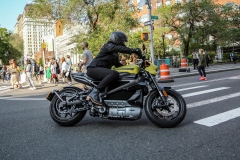
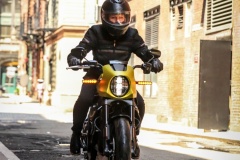
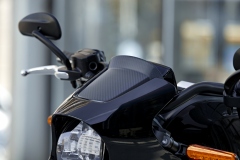
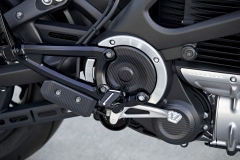
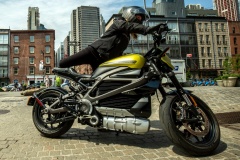
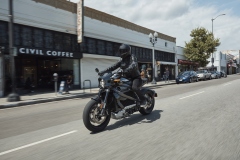
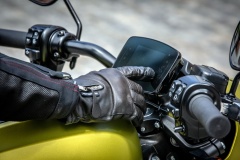
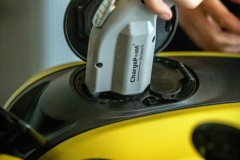
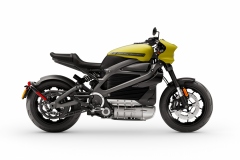
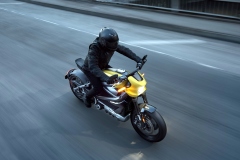
7 thoughts on “First Ride: 2020 Harley-Davidson LiveWire”